Thrombocytopenia Is Associated With Multi-organ System Failure in Patients With Acute Liver Failure
- PMID: 26453953
- PMCID: PMC5733710
- DOI: 10.1016/j.cgh.2015.09.029
Thrombocytopenia Is Associated With Multi-organ System Failure in Patients With Acute Liver Failure
Abstract
Background & aims: Acute liver failure (ALF) is a syndrome characterized by an intense systemic inflammatory response (SIRS) and multi-organ system failure (MOSF). Platelet-derived microparticles increase in proportion to the severity of the SIRS and MOSF, and are associated with poor outcome. We investigated whether patients with ALF develop thrombocytopenia in proportion to the SIRS, MOSF, and poor outcome.
Methods: In a retrospective study, we collected data on the post-admission platelet counts of 1598 patients included in the ALF Study Group Registry from 1998 through October 2012. We investigated correlations between platelet counts and clinical features of ALF, laboratory test results, and outcomes. Of the patients studied, 752 (47%) survived without liver transplantation, 390 (24%) received liver transplants, and 517 (32%) died.
Results: In patients with SIRS, platelet counts decreased 2 to 7 days after admission, compared with patients without SIRS (P ≤ .001). Patients with abnormal levels of creatinine, phosphate, lactate, or bicarbonate had significantly lower platelet counts than patients with normal levels of these laboratory values (all P ≤ .001). The decrease in platelets during days 1 to 7 after admission was proportional to the grade of hepatic encephalopathy and requirement for vasopressor and renal replacement therapy. Although platelet numbers decreased after admission in the overall population, platelets were significantly lower 2 to 7 days after admission in patients with outcomes of death or liver transplantation than in patients who made spontaneous recoveries and survived. In contrast, international normalized ratios over time were not associated with SIRS, laboratory test results associated with poor outcomes, grade of hepatic encephalopathy, or requirement for renal replacement therapy.
Conclusions: The development of thrombocytopenia in patients with ALF is associated with the development of MOSF and poor outcome. We speculate that SIRS-induced activation of platelets, yielding microparticles, results in clearance of platelet remnants and subsequent thrombocytopenia.
Keywords: Blood Cell; Hemostasis; INR; Plasma Membrane Fragmentation.
Copyright © 2016 AGA Institute. Published by Elsevier Inc. All rights reserved.
Conflict of interest statement
Figures
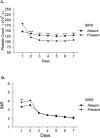
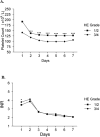
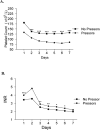
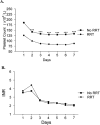
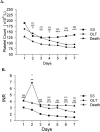
Comment in
-
Acute Liver Failure Prognostic Scores: Is Good Enough Good Enough?Clin Gastroenterol Hepatol. 2016 Apr;14(4):621-3. doi: 10.1016/j.cgh.2015.12.025. Epub 2015 Dec 24. Clin Gastroenterol Hepatol. 2016. PMID: 26724727 No abstract available.
References
-
- Ganey PE, Luyendyk JP, Newport SW, et al. Role of the coagulation system in acetaminophen-induced hepatotoxicity in mice. Hepatology. 2007;46:1177–1186. - PubMed
-
- Harrison PM, Wendon JA, Gimson AE, et al. Improvement by acetylcysteine of hemodynamics and oxygen transport in fulminant hepatic failure. N Engl J Med. 1991;324:1852–1857. - PubMed
-
- Rolando N, Wade J, Davalos M, et al. The systemic inflammatory response syndrome in acute liver failure. Hepatology. 2000;32:734–739. - PubMed
-
- O’Grady JG, Alexander GJ, Hayllar KM, Williams R. Early indicators of prognosis in fulminant hepatic failure. Gastroenterology. 1989;97:439–445. - PubMed
-
- Clemmesen JO, Larsen FS, Kondrup J, et al. Cerebral herniation in patients with acute liver failure is correlated with arterial ammonia concentration. Hepatology. 1999;29:648–653. - PubMed
Publication types
MeSH terms
Grants and funding
LinkOut - more resources
Full Text Sources
Other Literature Sources
Medical

